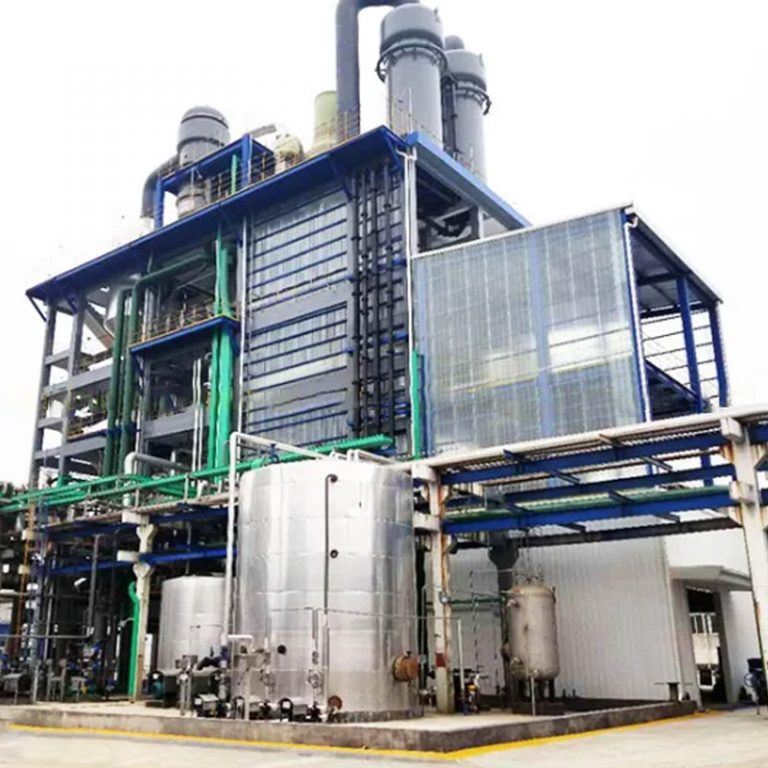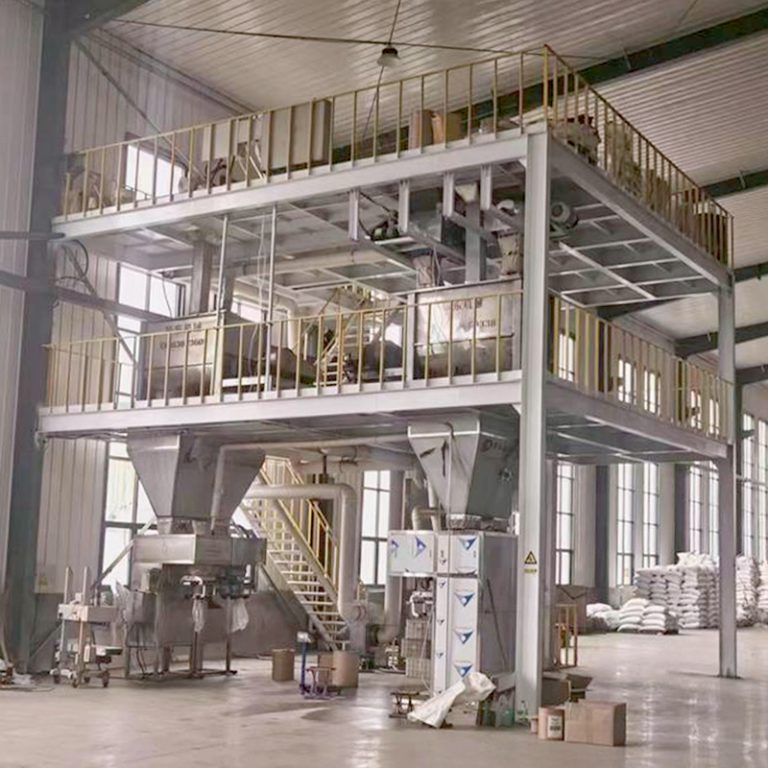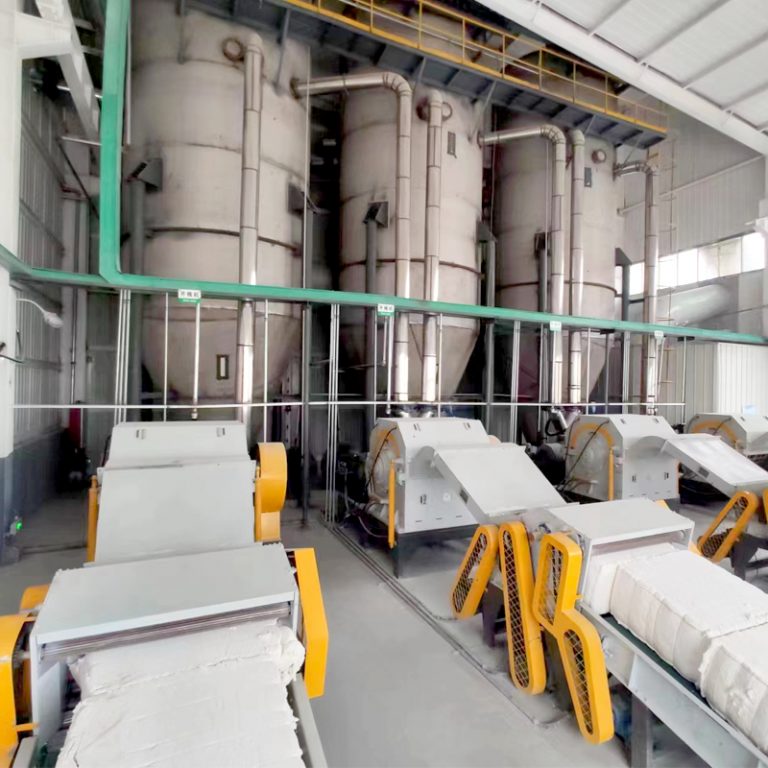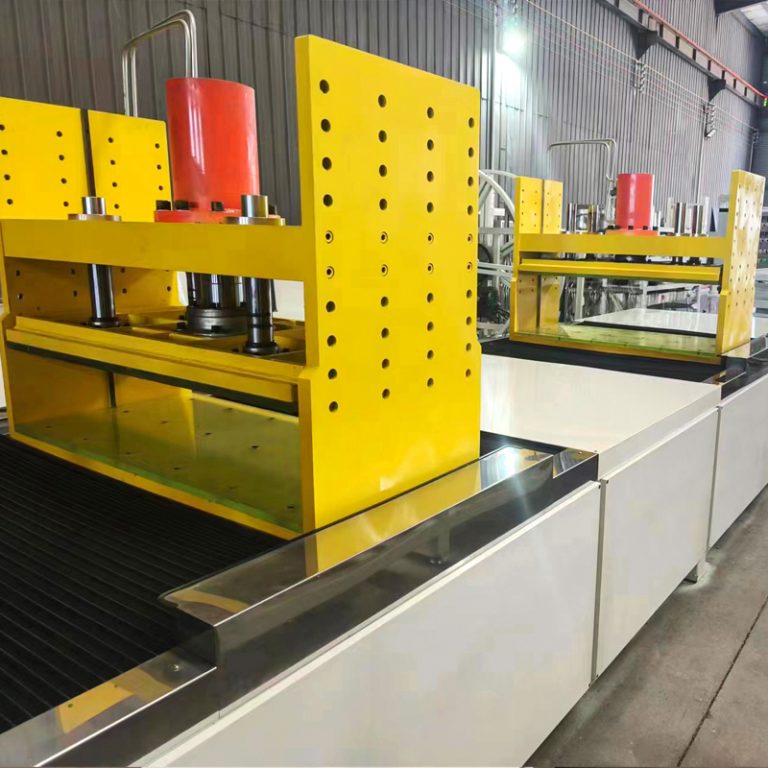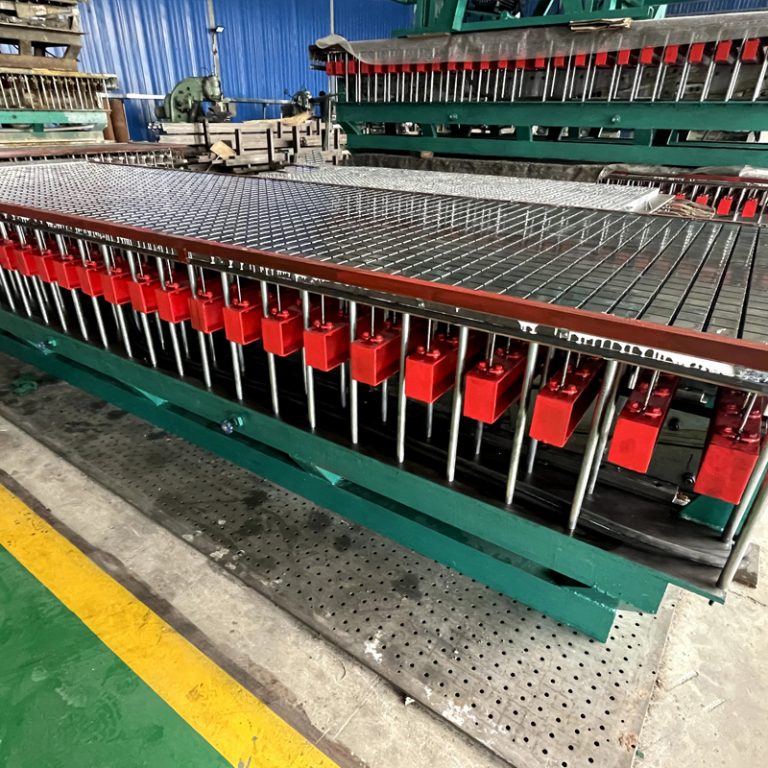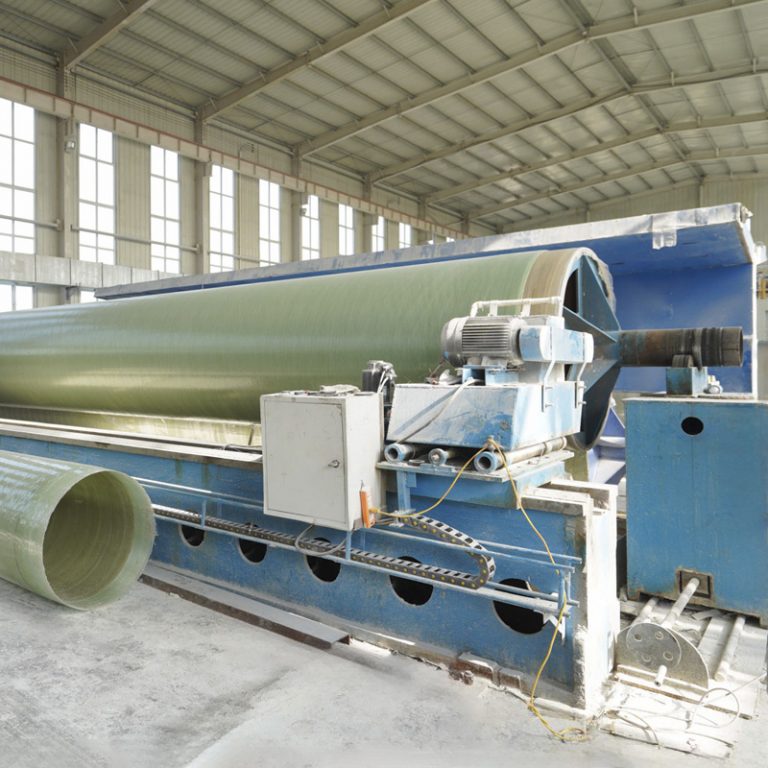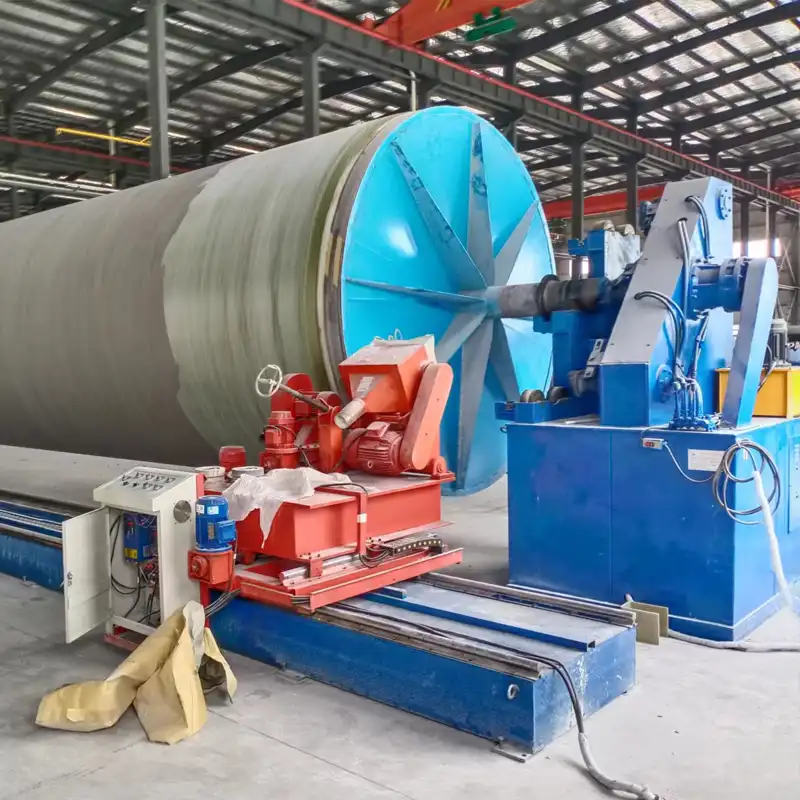What is FRP Filament Winding? How is it Not Like Older Methods?
FRP filament winding is a modern way to make things. It changes completely how we build strong, lightweight parts made from special materials. It works by carefully winding fibers soaked in sticky resin around a spinning mold called a mandrel. This creates parts that are light but very strong. Older ways of making things depend on steps that use a lot of power. These steps include pouring hot metal into shapes (casting) and cutting metal away (machining). These older steps often waste more material and are less efficient. Seeing these differences helps us know why more factories are choosing filament winding. They want better performance and to be more earth-friendly.
A Simple Look at the FRP Filament Winding Process
FRP (Fiber Reinforced Polymer) filament winding is a factory method. It uses long, thin strands (fibers) made of glass, carbon, or a tough material called aramid. Workers wind these fibers onto a spinning mandrel. The fibers are soaked in sticky resin while they are being wound. This forms a strong material layer. The mandrel decides the final shape of the part. Think pipes, tanks, or containers that hold pressure. After winding, the part is hardened (cured). This makes the resin solid. The result is a very strong part that doesn’t weigh much.
What Older Factory Ways are Usually Like
Older ways to make similar parts include steps like metal casting, machining, or injection molding. These ways usually start with metals or plastics. Workers often have to cut away a lot of the starting material. Or they reshape it heavily to get the final shape. These older steps usually need more hands-on work. They also often make more trash. This happens because of leftover bits from cutting or because shaping the raw stuff isn’t done perfectly.
How the Basic Ideas of Both Ways Differ
The main idea behind FRP filament winding is making parts very smartly. It uses just the right amount of material with little waste. The process puts the fibers exactly where they need to be. This lines them up with the directions where force will pull or push. This gives the strongest part for its light weight. Older ways often try to make things strong just by using thick, heavy stuff. They don’t always think about putting strength only where it’s needed. Also, filament winding uses machines that work by themselves (automation). It can make the same part perfectly many times. Getting this kind of sameness with older ways can be much harder.
How Much Energy Do These Ways Use? Is it Different?
Saving energy is now super important for factories. The difference between FRP filament winding and older ways is huge. Filament winding uses energy wisely. It does this through machines working by themselves and putting material only where needed. The older ways often use way too much power. This happens because they use big machines for cutting and shaping. They also often need very high heat. Looking closely shows why filament winding is becoming the favorite. People want methods that are both cheaper and better for the Earth.
What Changes How Much Energy FRP Filament Winding Uses?
A few things change the energy needed for FRP filament winding. How good the machine is matters. How the resin gets hard (curing) matters too. The energy needed to soak the fibers in resin also counts. The automatic systems in this method are built to use less power. They still make parts quickly. Also, the curing step can be done smarter. Modern tricks like using UV light (like strong sunlight) or better heaters help save energy.
How Much Energy Do Older Factory Ways Need?
Older factory steps usually need a lot more energy going in. This is because they use big, powerful machines to cut, shape, and finish stuff. Steps like casting metal need super hot furnaces to melt the metal. Machining needs lots of power to grind away metal. Added all up, these old ways need much more energy. This is compared to making things from special materials like with filament winding.
Putting Numbers on Energy Savings
Filament winding is much better at saving energy than older ways. Why? Its steps are smoother and simpler. It doesn’t rely so much on big power-eating steps like heavy cutting or super heating. Studies show that making parts from special materials (like FRP) can use half as much energy! This is compared to making similar parts from metal the old way.
Why is Saving Energy So Important for Factories Today?
Right now, for factories, saving energy isn’t just nice – it’s a must. Using too much energy makes running the factory very expensive. It also harms the air, water, and land. FRP filament winding offers a better choice. It needs much less energy than old ways of making things. This part looks at how saving energy helps factories save money for years. It also helps the whole world be healthier.
How Saving Energy Cuts Costs
Saving energy directly lowers how much it costs to run the factory. Less electricity and fuel used means lower bills. Factories using smart ways like filament winding save a lot of money over time. They can still sell their products at good prices.
How Using Too Much Energy Hurts Our World
Using lots of energy creates pollution. This happens mostly when factories burn coal, oil, or gas for power. This pollution makes the Earth warmer. Switching to better methods like FRP filament winding helps factories a lot. They make far less pollution. This helps everyone work towards a cleaner planet.
Good Things That Last from Using Better Methods
Using energy-smart factory ways has long-lasting good points. Factories need less oil, coal, and gas that won’t last forever. They become stronger competitors because making things costs less. It also matches what countries everywhere are trying to do to protect nature. Companies that invest in new tech like filament winding become leaders. They show others how to be better and smarter.
What Else is Good About FRP Filament Winding Besides Saving Energy?
Saving energy is a big reason to like FRP filament winding. But there’s more good stuff! This smart method also uses materials better, makes less trash, and makes stronger products. How? By lining up the fibers perfectly. Also, machines working by themselves (automation) makes production smoother. This means fewer mistakes and easier growth. These points make filament winding a game-changer. Factories get high-performance parts, save money, and help the Earth.
Using Material Smarter and Making Less Trash
FRP filament winding lets workers control exactly where the material goes. Fibers go only along the paths where force will pull or push. This makes the part work best. Much less stuff gets wasted. Compare this to older ways where good material often gets cut off and thrown away.
Making Parts That Work Better and Last Longer
Parts made by filament winding are really tough. They resist stretching apart (high tensile strength). They also don’t rust or rot (corrosion resistance). Being able to point the fibers just right lets factories build parts for special jobs. These parts last a long time, even in really rough places.
Machines Working By Themselves: How It Helps Factories Run Smoother
The automation built into filament winding machines makes the whole factory work better. It needs fewer people. It also makes fewer mistakes that people sometimes make. Machines working by themselves make every part just like the last one. This is true even when making many, many parts. It’s also easy to make more or fewer parts quickly if needed.
How Can Aoliande Help You Start Using FRP Filament Winding?
Switching to FRP filament winding needs know-how and good machines. Aoliande has these things. They are a top name people trust in this field. They have very modern machines. They always look for new ideas. They make solutions just for you. Aoliande makes moving from old ways easy. They help you use the full power of filament winding. You get top performance and save energy.
Knowing How to Build Great FRP Filament Winding Machines
Aoliande is famous for building top FRP filament winding machines. Their machines use the newest tech. They help factories make their work better. FRP filament winding makes super strong, lightweight parts. It does this by perfectly placing long fibers soaked in sticky resin. Aoliande’s know-how means their machines make great parts. They also keep the work running smoothly and save energy.
Always Finding New Ideas and Keeping Quality High
Finding new ways to do things is key for Aoliande. They spend time and money on research. They want to stay ahead in their field. Because of this, their machines don’t just meet world quality rules. They often beat them. Using energy-smart tech shows they care about the planet. Examples are smarter ways to harden resin and better heating systems.
Making Special Answers for Different Factory Needs
Aoliande knows different factories need different things. So, they make solutions just for you. Maybe you need a machine to build strong tanks. Or maybe you need special gear for windmill parts. Aoliande talks closely with customers. They build machines that fit the factory’s goals perfectly.
Conclusion
Looking at FRP filament winding versus old factory ways shows big differences in energy use. Filament winding saves much more energy. Its steps are simpler. It doesn’t need power-heavy steps like heavy cutting or super heating. Old ways usually need much more energy going in. This is because they cut away a lot of material or reshape it heavily.
By choosing FRP filament winding, factories can save a lot of energy. They still make top-quality parts. This change doesn’t just lower costs. It also fits with world efforts to protect our environment.
Common Questions About Saving Energy: FRP Filament Winding vs. Old Ways
Who uses FRP filament winding the most?
Big factories that build planes, cars, and buildings use it a lot. Why? Because the parts are super strong but light, and the method saves energy. Being able to make light, tough parts is very useful. Plane makers use it for parts that help planes use less fuel. Car companies use it to make lighter car pieces. This helps cars use less gas too.
Can old factory ways save as much energy as filament winding?
Old ways might cost less to start sometimes. But over time, they usually use way more energy than filament winding. Steps like pouring hot metal (casting) or cutting metal (machining) need huge machines and lots of power. They also often make more scrap material. Filament winding’s automation uses power smarter. It also wastes much less stuff, saving energy and materials.
Is switching from old ways to filament winding hard?
It can feel big, but it’s easier with help. Good partners like Aoliande make it smoother. They teach your workers well. The training covers running the machine and fixing problems. Aoliande also builds machines that are easy to learn. This helps workers who know old methods switch faster. You get up and running quickly. Choosing a helper like Aoliande means you can start using filament winding well. You get its full power for saving energy and working better.
For expert guidance and advanced machinery to implement FRP filament winding in your operations, contact Aoliande via WhatsApp: +86-13363884492 or Email: belen@aldfrp.com.










